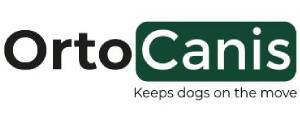Do large dog breeds dislocate their hips?
Are changes in the way the hindquarters of our dogs move due to hip dysplasia?
People frequently ask questions about movement disorders or difficulties, claudication and limping of the hindquarters, both in puppies and adult dogs. It is important to understand that NOT all claudication is related to the same type of pathology and does not respond to just one type of treatment. It is very common to hear that elderly dogs “dislocate their hips".
The term “hip dislocation” is a popular reference to hip dysplasia. If you are referring to elderly animals, in the majority of cases the hip is not responsible for the problem. It usually has to do with dorsal or lumbar spine conditions. Symptoms include difficulties moving the hindquarters, or even paresis of the latter. Spine problems can appear in dogs from the age of 7 or 8 years old. They normally appear in large dog breeds, regardless of whether dysplasia is present. Clinical manifestations of hip problems are more common in younger dogs. However you must also remain aware that a large percentage of animals do not display any symptoms.
What happens to elderly dogs?
As your dog gets older, the first signs of aging will appear: it will be less active and may limp on its hindquarters.
If this issue occurs in dogs that did not have any problems walking when they were younger, the owners are often surprised at the change in the level of activity and think that the dog is suffering from hip dysplasia. However, in many cases the spines of the dogs have suffered as a result of the pressure and tension that has been applied to the intervertebral discs which causes the fibre of the capsules to harden (therefore the intervertebral cartilaginous discs withstand and cushion fewer blows and tension) and in many cases the nuclei of the intervertebral discs move and exert pressure on the medulla (herniated disc) compressing the nerve roots and causing pain and neurological impairment.
This condition is known as spondylarthrosis or degenerative stenosis in the lumbosacral region or the dorsolumbar region of the spine.
Symptoms vary depending on where the injuries are located, but on a lot of occasions they are similar to the symptoms of hip dysplasia: pain in the hind legs, limping, difficulty getting up, staggering and a decrease in activity. Spondylarthrosis can evolve into paralysis of the hindquarters. Many animals have one or more affected vertebrae in a subclinical condition (symptomless) or show mild clinical symptoms.
In the case of spondylarthrosis, aggressive treatment is necessary.
Anti-inflammatory agents, neurotropic vitamins, cartilage regeneration agents, chondroprotectors, analgesics, and muscle relaxants are used in conjunction with rehabilitation therapies in more serious cases. You should consult your vet in these cases as it is essential to make a good diagnosis and make a distinction between the different pathologies in order to apply the correct treatment.
What happens with puppies in the case of hip dysplasia?
In the specific case of puppies, not all of them are symptomatic when they suffer from hip dysplasia. From the age of 6 months upwards, it can be diagnosed by means of an X-ray which is taken when the animal is anesthetised, which allows the ligaments of the hip joint to be relaxed and perfectly positioned.
Further injuries to the lumbar spine (cauda equina) may appear here. They cause pain and claudication that may co-exist with hip dysplasia or with hips that are fully healthy. Therefore, a specific, differential diagnosis is essential.
The sole objective of these concepts is to give you a general overview of some of the pathologies that can affect our dogs, rather than believing that the “hip is the root of all evil."
In the case of “older” dogs and puppies in particular, we can monitor and prevent joint problems. In order to do this, you can use chondroprotectors. These are injected or administered orally and inhibit the action of degradative enzymes on cartilage. They are also natural anti-inflammatory agents, which nourish the cartilage cells and stimulate regeneration of cartilage.
The closer your dog gets to the age of 10, the more important it becomes that it is well fed but also remains thin. Obesity or excess weight is an element that works against longevity. Moderate exercise keeps our animals active and in a good mood.
Dr. Ana Maria Robles - Veterinary Doctor - Private Doctor No. 2626

